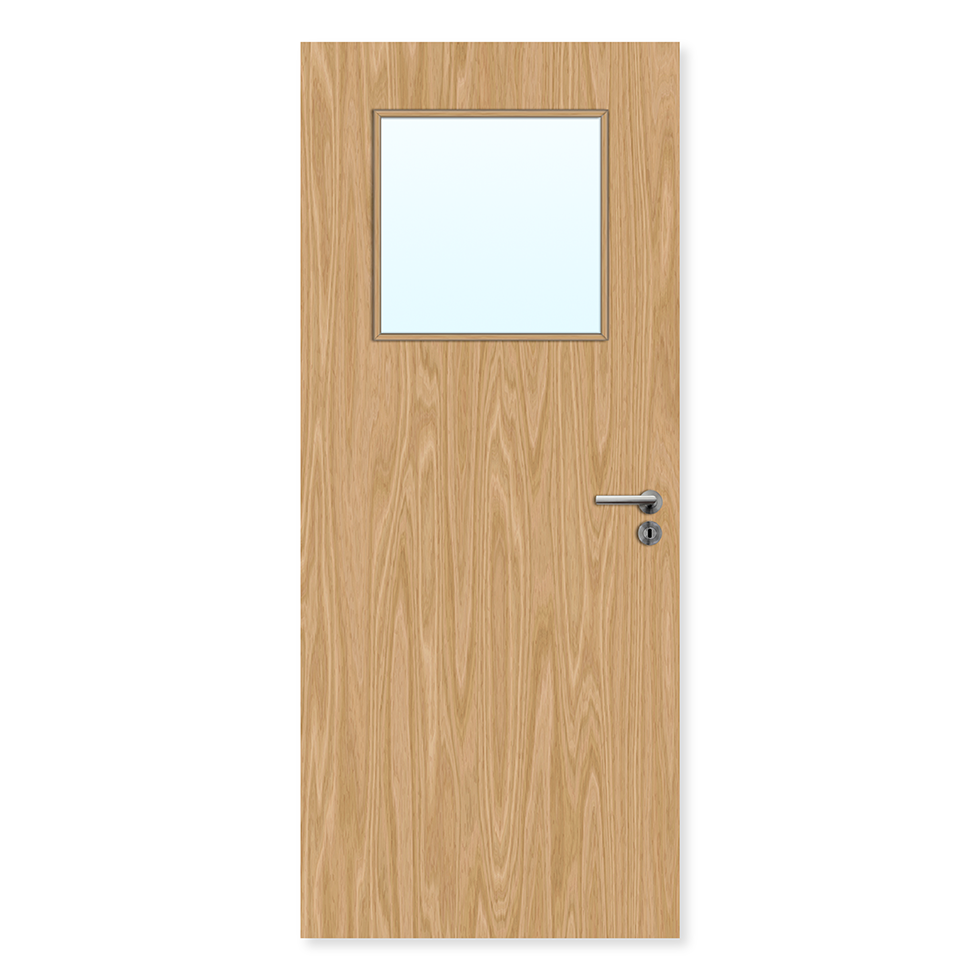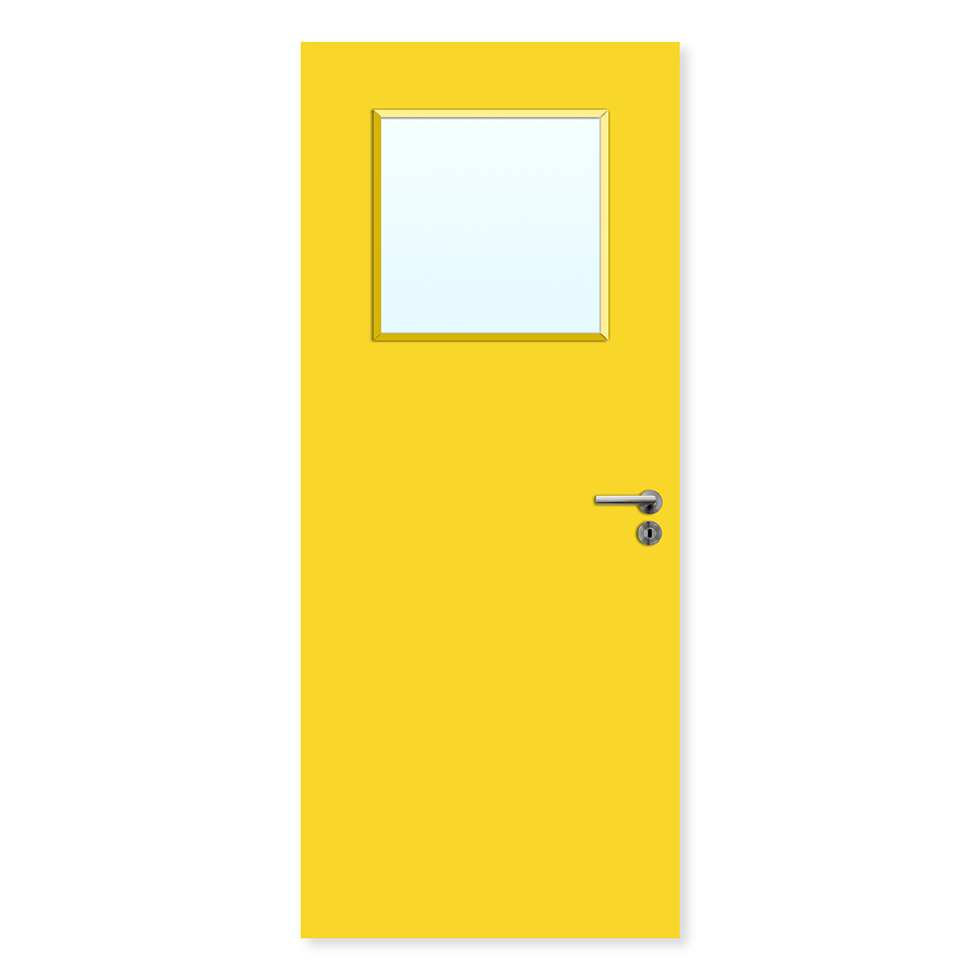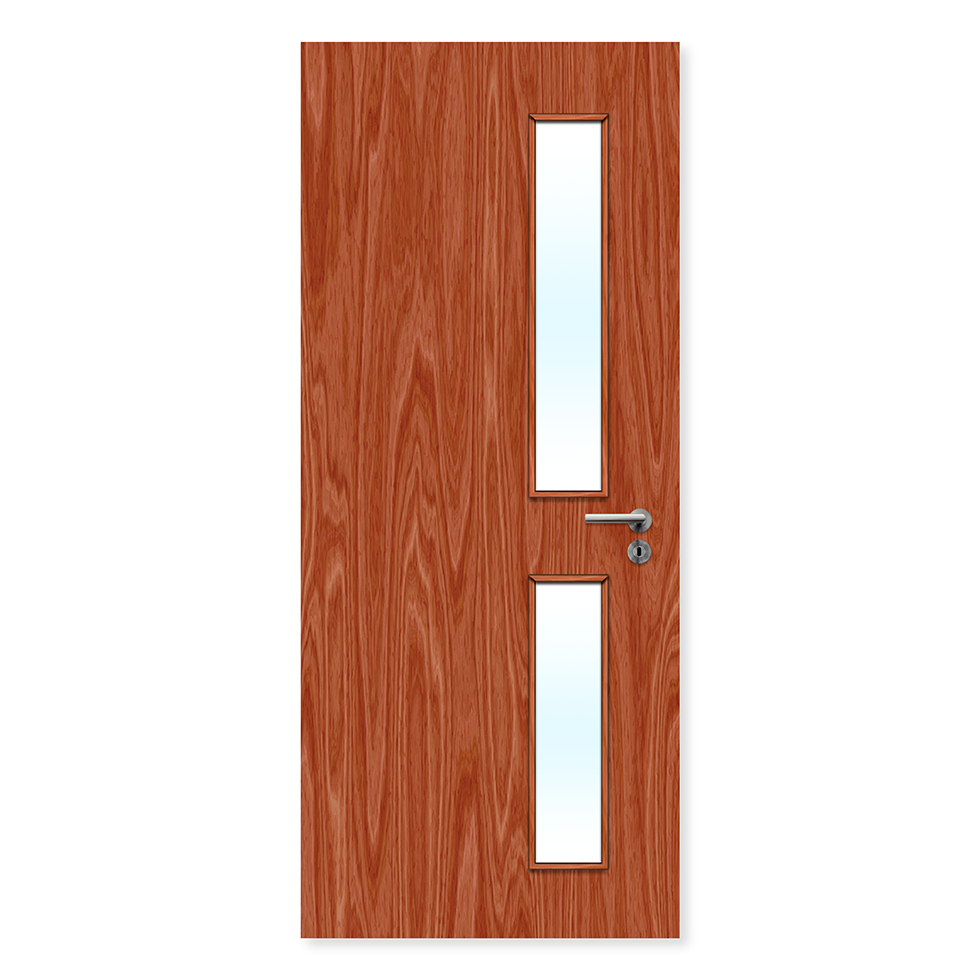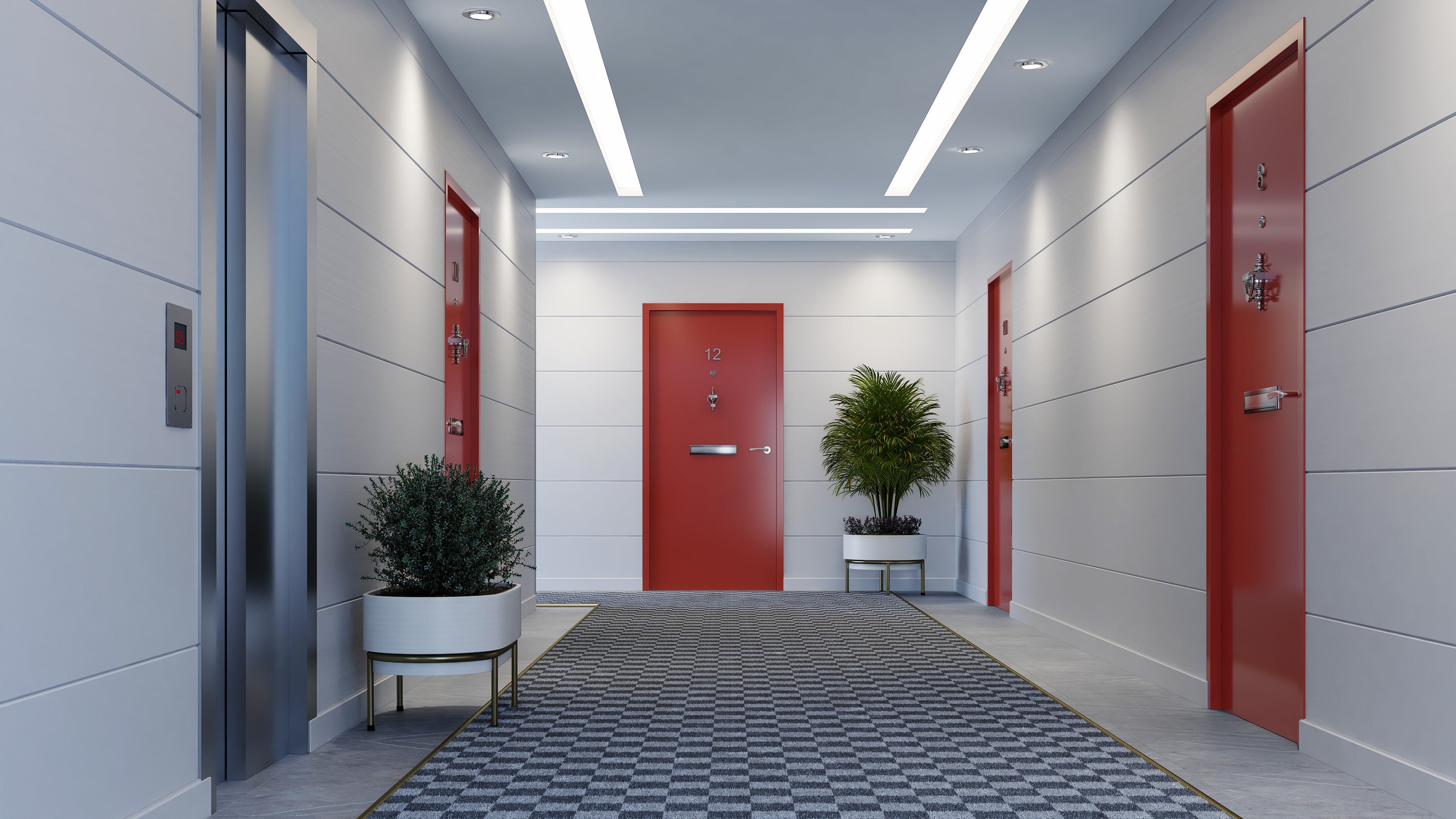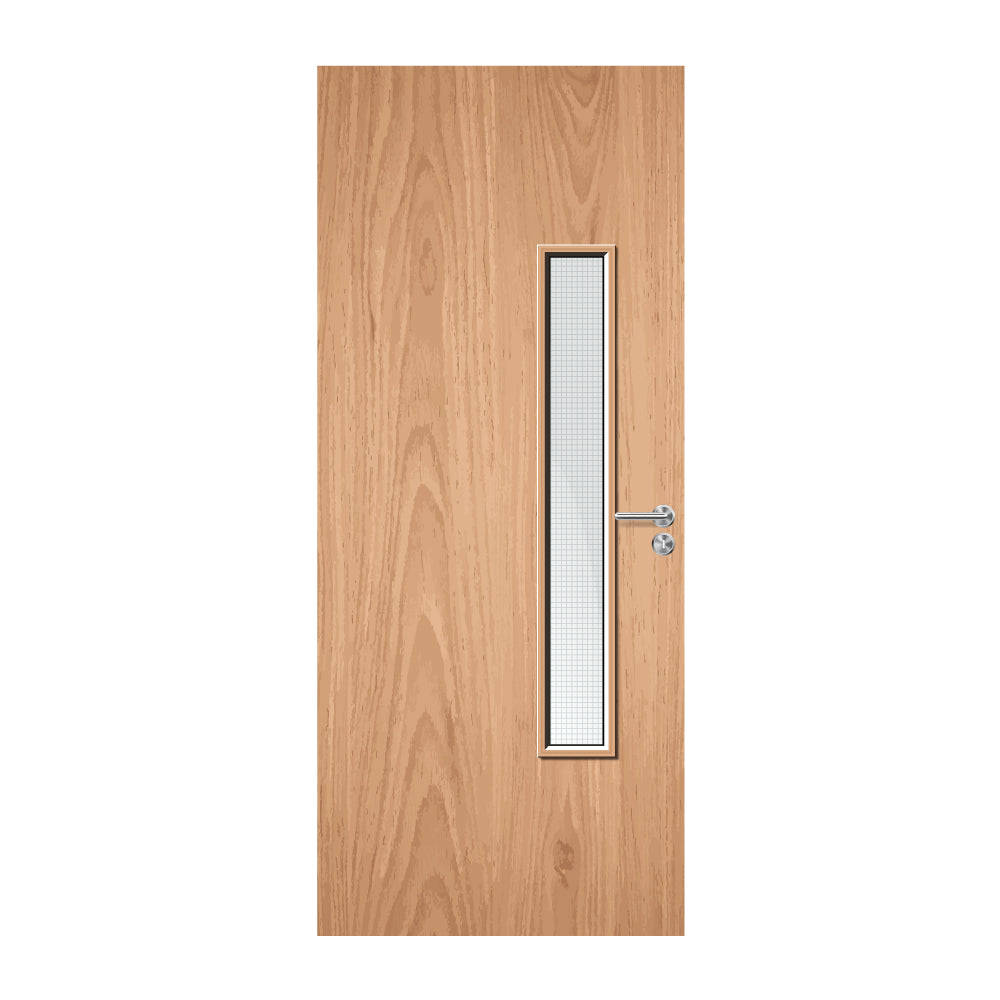Outstanding
Customer Service Second to None
What You Need to Know About the Fire Safety Act 2021
If you’re a leaseholder in a building that contains two or more sets of domestic premises, then there’s a major new piece of legislation that you need to know about - the Fire Safety Act 2021. It’s an Act of Parliament that could have some fundamental impacts upon you. Read on to find out everything you need to know about the Fire Safety Act 2021.
What is the Fire Safety Act 2021?
The Fire Safety Act 2021 began life as the Fire Safety Bill, introduced on the 19th March 2020 by the Home Office in the wake of the Grenfell Tower fire and several other related tragedies.
The Bill’s passage through Parliament proved to be a turbulent one. Why? Largely because of attempts by Peers in the House of Lords to amend the Bill to include a clause prohibiting the passing on of remediation costs associated with building elements such as cladding, fire doors and insulation systems to residents.
In total, these amendments were rejected by the House of Commons five times.
However, the Bill did eventually receive Royal Assent, becoming an Act of Parliament - The Fire Safety Act 2021, on 29th April 2021.
The Government is also aiming to make the Fire Safety Act 2021 just one of a series of new pieces of legislation that make up a wider fire safety framework. For example, the Government is currently debating the Building Safety Bill in Parliament. Other moves to improve safety include the proposed introduction of a Buildings Safety Regulator which will work in collaboration with the Health and Safety Executive.
Why has the Fire Safety Act 2021 been introduced?
The primary motivating factor for the passing of the Fire Safety Act 2021 was the Grenfell Tower tragedy which occurred on 14th June 2017.
Grenfell Tower fire
Grenfell Tower was one of many new tower blocks built throughout London during the late-1960s and early-1970s. Designed in a Brutalist style by Clifford Warden and Associates, Grenfell Tower was built during 1972-74 as part of the larger Lancaster West Council Estate.
Like many tower blocks across the UK, Grenfell Tower operated a ‘stay put policy’ in the event of an outbreak of fire. This policy was based on the idea that if a fire broke out in one flat, thick walls and fire doors would contain the fire long enough for the fire service to arrive and tackle the fire.
With this policy in place, it was never assumed that the entire building would need to be evacuated. As a result, Grenfell did not have a centrally activated fire alarm nor did it have multiple staircases.
The result of this was catastrophic.
At around 5am on Wednesday 14th June a fridge-freezer caught fire in Flat 16 on the fourth floor.
Having been discovered by the resident, the London Fire Brigade were on the scene within six minutes. However, due to a catalogue of unresolved building defects (such as the automatic openable vents (AOVs) which had not been working for years), a fire risk assessor who had allegedly given false information about his qualifications, and the now infamous cladding and external insulation, the fire quickly spiralled out of control.
72 people lost their lives, changing the fire safety landscape forever.
How the Fire Safety Act 2021 tackles complacency
In addition to the tragic Grenfell Tower fire, the Fire Safety Act 2021 has been introduced to tackle a widespread complacency around fire safety in general.
At Active Fire Safety Solutions Ltd we can attest to this first hand. We regularly carry out detailed fire risk assessments, yet encounter complacency among some building owners and occupiers to address issues that are raised as a result of the inspection.
There remains a ‘it’ll never happen to me’ attitude among many owners and occupiers.
Indeed, we have one case on record where a healthcare organisation took our report findings, considered the risk of fire, and came to the conclusion that the necessary remediation works would be ‘too costly’.
It’s because of this pervasive attitude that the Fire Safety Act 2021 has become necessary.
As an added deterrent against complacency, the Fire Safety Act 2021 has amended Article 50 of the previous Regulatory Reform (Fire Safety) Order 2005 to explicitly state that proof of a failure to comply with guidance approved by the Secretary of State shall ‘tend to establish’ that there has been a breach of the requirement to take general safety fire precautions as part of a prosecution.
In other words, it’s likely going to become easier to bring prosecutions against people who have not taken fire safety seriously...
Fire safety campaigners
That’s not to say that there aren’t people out there campaigning for improved fire safety, especially for tower blocks and other multiple occupation buildings.
Campaigns such as the Cladding Scandal Map, aim to raise awareness of buildings that continue to be clad in dangerously combustible cladding, even years after the Grenfell Tower tragedy.
These campaigns do appear to be having an impact, with the UK Government pledging over £5 billion in February 2021 towards remediation works. Nevertheless, many individual leaseholders are still facing extensive costs, especially if they have unwittingly purchased an unlawfully constructed home.
How the Fire Safety Act 2021 tackles misinformation
The Government’s previous fire safety legislation, The Regulatory Reform (Fire Safety) Order 2005, brought together several different pieces of legislation into one. It applied to all non-domestic premises, including communal areas of residential buildings with multiple homes. The Order also designated a ‘Responsible Person’ for fire safety whose duty is to undertake assessments and manage risks, with the Order enforced by Fire and Rescue Authorities.
The Order also covered any house in multiple occupation (HIMO) with shared facilities of any height.
This all sounds very commendable in theory, but in practice we’ve found that leaseholders were not aware of their duties under this Order. As a result, these leaseholders now face issues with non-compliance as they haven’t updated their properties with compliant fire doors, frames and other building elements such as cladding (on blocks or apartments over 18m to the highest floor level).
The Fire Safety Act 2021 aims to make it clearer to leaseholders what their responsibilities are in relation to fire safety.
For many years Active Fire Safety Solutions Ltd has been carrying out fire safety risk assessments and fire door installations under the Regulatory Reform (Fire Safety) Order 2005 and have encountered a real lack of understanding and knowledge on fire safety legalities and responsibilities.
What does the Fire Safety Act 2021 mean for landlords?
If you are a landlord then you have a responsibility under the Act to carry out a ‘suitable and sufficient’ fire risk assessment. Whoever you employ to carry out this fire risk assessment must be competent to do so (as outlined in the provisions of the Fire Safety Act 2021).
Because of this detail in the Act, it’s really important that you don’t get caught out, either by suppliers of fire doors or installers, who are not competent. Before giving anyone work, you should ask to see evidence of their knowledge/experience and also ask for previous installation references, installation photographs etc.
What does the Fire Safety Act 2021 mean for apartment owners or leaseholders?
So, how does the Fire Safety Act 2021 differ from the preceding Regulatory Reform (Fire Safety) Order 2005? And, what does it mean for apartment/flat owners or leaseholders?
The Act applies to you if you live in, or are the owner or leaseholder of, a flat or apartment in a block with more than a single dwelling where the door opens onto a common escape route.
If this scenario applies to you, then there are several things you need to do in order to be compliant with this new piece of legislation.
How can I tell if I have a compliant fire door on my flat/apartment?
A door is a door right? Not according to the new Fire Safety Act 2021.
You need to make sure that your door is fire rated. You will be able to tell if you have a fire door on your flat/apartment if it has a label attached to the head confirming its certification number and manufacturer. Alternatively, it may have a coloured plug inserted by the manufacturer which confirms that the door is at least a 30-minute resistant fire door.
There are also a few other things you should look for to ensure your door is compliant:
- Your door should be at least 44mm thick.
- Your door should be affixed to the door frame by three certified or BS approved hinges made of steel. These hinges should not be leaking oil, and should include intumescent material pads at the back of each hinge plate (you will need to unscrew one plate to check at the back).
- If the door is fitted with a letter plate (the plate that covers your letter box), then the door must have a certificate to prove that it is fire-resistant and smoke-stopping.
- The door handle and lock must be fire rated and certified. They must be comparable with the door installed.
- The gap between the door and frame must be between 3mm and 4mm (and up to 10mm at the bottom of the door).
- Your door should have a self-closing device fitted either at the top or centre of the door.
- The door should fully close onto its rebates (the door stops).
- The door must not be twisted in its frame and should sit flush into its rebates (door stops).
- The door frame (or the edge of the door) must have combined heat and cold smoke seals installed. Older doors may have a 10mm seal, whilst later doors will have 15mm seals.
- Your door frame must be in a good state of repair with no major failings. It should be secured to its opening correctly with fire stopping being provided where the frame and wall meet along the top and either side.
- The door must open fully and close unhindered at a reasonable speed.
- If your door has glazing, then it must be rattle free and should be correctly installed with appropriate glazing proprietary systems in place. Any glazing panel in your door should have a Kitemark or be stamped to show that it’ll provide at least 30 minutes’ of fire resistance.
- Unfortunately, cat flaps are not permissible in fire door installations. So, if your apartment/flat door has a cat flap it is not compliant with the Fire Safety Act 2021.
If your door does not meet all of the criteria above, then you will need to replace your door set/fire door assemblies.
Why do I need to change my flat/apartment door for fire safety?
Under the Fire Safety Act 2021, the front door on your apartment/flat will need to be compliant with the requirements outlined above (if it opens onto a common escape route).
If you do not have a fire door on your apartment which is compliant with the stipulations laid out in the Fire Safety Act 2021 you may suffer a number of serious consequences. These include being unable to sell your flat or apartment, being unable to obtain a mortgage on the property, or renting your property to tenants.
More seriously, these regulations have been introduced for good reason. If you don’t have a compliant door on your flat/apartment you will be putting yourselves and others at risk in the event of a fire.
It pays to install a compliant fire door on your flat/apartment.
What types of doors are compliant with the Fire Safety Act 2021?
If you’ve determined that you need to get a new fire door for your apartment, then you need to make sure that you buy the right type of door. Not every door that’s available on the market will be compliant under the Fire Safety Act 2021. So, be careful where you order your door.
To buy a compliant fire door for your apartment/flat, make sure the door meets the following specifications.
Fire doors must conform to safety standards
The door must conform to a British safety standard known as BS 476 Pt 22.
Buying the right fire door for you
When buying a compliant fire door you have two options.
You can either buy a fire doorset or a fire door assembly. What’s the difference between the two? Find out below:
- Fire door set - a fire door set is a complete unit consisting of a door frame, door leaf (or leaves if a double door), along with all of the essential ironmongery, from a single source.
- Fire door assembly - a fire door assembly is a fire door that is supplied as components from different suppliers to be made up on-site into a finished door assembly.
So, when you buy a fire door-set, you’re buying a pre-assembled, fully finished product from a single manufacturer. Whereas a fire door assembly is sourced from different suppliers and then assembled.
Note - by ironmongery, we mean the metal parts of the door such as the handle, latches etc.
Either of these two options are suitable from a compliance point of view. However, the way they are installed is different.
Installing your fire door compliantly
Depending on what type of fire door you buy (set versus assembly), you will need to have them installed in different ways.
If you are installing a fire door set, the installation needs to meet EN 1634.
If you are installing a fire door assembly, then the installation will need to meet BS 8214 2016. Any ironmongery used as part of a fire door assembly will need to meet BS EN 1906:2010 and BS EN 1935.
Get your new fire door approved
You don’t just need to buy a compliant door and have it installed in the right way. One of the most important things you need to do is get building control approval. The building inspector (usually from the local authority) will need to see certification which proves the standards of the installation.
That’s why it’s important to have your flat/apartment fire door installed by a qualified professional.
Who is qualified to undertake fire risk assessments?
At this point you might be wondering who is able to conduct a fire risk assessment of your property or install your new fire door.
This is a question we receive regularly here at Active Fire Safety Solutions and the answer has changed over the years as the legislation has changed.
Under the 1971 Fire Precautions Act, it was the responsibility of local Fire Services to carry out fire safety inspections and issue fire certificates. However, since the introduction of The Regulatory Reform (Fire Safety) Order 2005 responsibility for carrying out fire safety inspections moved from local Fire Services to a ‘Responsible Person’ of non-domestic premises.
Under the Responsible Person system, anyone is allowed to carry out a fire risk assessment provided the person ensures they are competent to do so. In reality, this rarely happens and fire risk assessments are undertaken by people with no experience or qualifications in fire safety.
The new Fire Safety Act 2021 has extended and clarified the definition of a Responsible Person. The new Act requires the Responsible Person for a multi-occupied, residential building, to manage the risk of fire for the structure and external walls of the building and entrance doors to individual flats that open into communal areas.
Note - We would strongly recommend that you use a qualified, experienced fire safety professional to undertake a fire safety inspection of your building rather than leaving it to a ‘Responsible Person’ - especially as following the Grenfell Tower fire, there will likely be more prosecutions for breaches of fire safety regulations.
Third-party accredited fire safety professionals
As well as Responsible Persons, you may also see mention of third-party accredited installers and inspectors when researching your new fire door.
But, be wary!
Many trade organisations have encouraged third-party accreditations over the years, which in theory means that tradesmen can become accredited and undertake things like fire safety inspections
The reality however, is very different.
Here at Active Fire Safety Solutions we have been astounded by the lack of practical and technical knowledge, experience and formal procedures of these accreditation bodies. In many instances they are allowing tradesmen to take a very basic fire safety qualification and immediately start conducting fire safety inspections - often with very little real knowledge of fire safety regulations.
This poor accreditation practice is not only confined to fire inspections. Unfortunately, it has also ballooned amongst fire door installers. We have seen an increase in cases where third-party accredited fire door installers are offering their services without any real understanding of fire safety best practice, the correct standards, and failing to work to fire door manufacturer instructions.
As a result of this, many building control inspectors will not sign-off work which has been carried out by third-party fire door installers.
Tip - it pays (literally) to use a properly qualified and experienced fitter to install your new fire door.
Many are the times that we have been called in to certify incorrectly installed fire doors or where doors have been fitted with the wrong ironmongery, all because of inexperienced and incompetent third-party accredited installation companies that don’t have the knowledge to install the correct combination of products, in the correct way.
Do I have to use a third-party accredited professional to install my new fire door?
Within the fire door industry (and more broadly amongst the construction industry and general public) there is a misconception that you have to use a third-party accredited professional to install fire doors.
This is not true.
Third-party accreditations are not required by law. In fact, our experience with two very well known third party accreditors has been one of astonishment at their lack of knowledge.
Indeed, it seems that many third-party accreditors view it as a way of printing money rather than genuinely trying to train and qualify people in fire safety.
When we have questioned third-party accreditors in detail about fire doors and their installations we have been surprised at their laid-back approach and the lack of supervision on signing-off installations. Which, of course, begs the question as to how liable some of these organisations are.
Active Fire Safety Solutions fire door installation and certification
Due to our experience with these third-party accreditors, we decided to use our own very extensive skill sets and experience to supervise and certify installations ourselves in collaboration with an independent installer.
At Active Fire Safety Solutions we now oversee all work carried out by our independent installer. We act as the clerk of works overseeing every element of every fire door installation that we carry out in collaboration with our independent installation company.
This ensures that joiners are not signing jobs off, but qualified fire safety professionals are doing so instead. We carry out checks throughout and at the end of each installation to ensure the work meets all current fire safety standards and that the products used and the installation are certified. This is backed by our own professional liability insurance and all work is guaranteed.
At Active Fire Safety Solutions we not only certify our installations (so you can keep your local building control inspector happy!), but we also offer a 100% no quibble guarantee on all of our installations. So, you can have complete peace of mind with an Active Fire Safety Solutions installation.
Apartment and flat fire doors that are compliant with the Fire Safety Act 2021
If you’ve made it this far, then you’ll probably have a very clear understanding as to why it’s important to have a fire door on your flat or apartment that is compatible with the Fire Safety Act 2021.
There are a huge range of compliant fire doors available at Premier Fire Doors. You can select from a massive range of different colours, styles and finishes. In fact, you’ll struggle to tell the difference between a standard door and one of our Fire Safety Act compliant doors. Fire doors have come a long way from the ones you used to see in schools and workplaces!
Internal Fire Door Sets
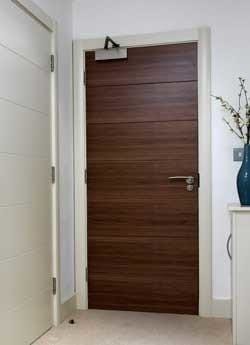
If your flat or apartment’s front door opens into an internal corridor, then one of Premier Fire Doors’ Internal Fire Door Sets is the perfect solution to becoming compliant with the Fire Safety Act 2021.
All of Premier Fire Doors’ internal fire doors can be supplied as factory pre-assembled door sets.
So, take the hassle out of purchasing all of the individual component parts that are required to fit a door with pre-hung door sets that are ready to fit.
These internal door sets are the perfect solution for new housing and apartment developments, self-build projects and house renovations (when doors are not being replaced into existing frames).
Benefits of an internal door set
- Save time - each door set is pre-hung and ready to install.
- Labour cost saving - quicker fitting times help to reduce onsite costs.
- Single sourcing - ease of purchasing all door related components in one place.
- Fully certificated - peace of mind that each Fire and Security rated door set is fully compliant.
- Factory controlled - each door set is assembled in a factory environment to ensure consistency and quality.
To ensure you are buying a compliant fire door, please state that you want an FD30 or FD60 fire rated door when making your enquiry.
External Fire Door Sets
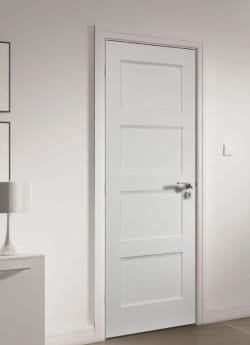
If your flat or apartment’s front door opens onto an external shared communal passageway, then one of Premier Fire Doors’ External Fire Door sets will be the perfect way of making your property compliant with the Fire Safety Act 2021.
The External Extreme Door sets from Premier Fire Doors are designed to withstand the toughest weather conditions with the strength and durability that you would expect from a quality fire door.
The Extreme Door sets are supplied factory finished in a white exterior paint as standard. Our colour options service can pre-paint individual door leaves (not frames) any RAL colour. So, your choice of colours for your apartment door is almost endless!
Each Extreme Door set is made to measure, pre-hung, and comes complete with all hardware and accessories. These door sets also come ready for installation and are backed by a 10 year manufacturing defect guarantee.
Benefits of an external door set
- Save time - each door set is pre-hung in a frame, complete with ironmongery and ready to install.
- Labour cost saving - quicker fitting times as no assembly required, helping to reduce onsite costs.
- Single sourcing - ease of purchasing all door related components in one place with no need to shop around for any accessories.
- Fully certificated - peace of mind that each Fire and Security rated door set is fully compliant.
- Factory controlled - each door set is assembled in a factory environment to ensure consistency and quality, giving extra peace of mind.
To ensure you are buying a compliant fire door, please state that you want an FD30 or FD60 fire rated door when making your enquiry.
What you need to do to be compliant with the Fire Safety Act 2021
Because the Fire Safety Act 2021 is a robust and complicated piece of legislation, we wanted to give you a quick ‘at-a-glance’ list of things you need to do to make your property compliant with this important piece of legislation.
- If you are a flat/apartment owner/leaseholder in any block of flats /apartments, you are required by law to ensure that your front flat/apartment door meets current standards for resisting fire and smoke (these doors are known as FD30s).
- If you are replacing the front door on your apartment/flat you must buy one that meets BS476 Pt22.
- When selecting a door, you should ideally buy a door set and have it installed in a way that meets BS EN 1634.
- Make sure that when you have your door installed that you get a certificate of installation that shows that the installation, door and/or frame all meet the standards above. You should also make sure you get a guarantee on both the door and the installation.
- Call us for further information and advice. We are here to answer any questions you have. Our experts are ready at the end of a phone or email. We see our mission as keeping you safe and legally compliant in this confusing and unsettled times following the recent change in legislation.
We hope that you’ve found this article about the Fire Safety Act 2021 useful. For more fire safety, fire door and fire regulation advice explore the Premier Fire Doors and Active Safety Solutions website now.

